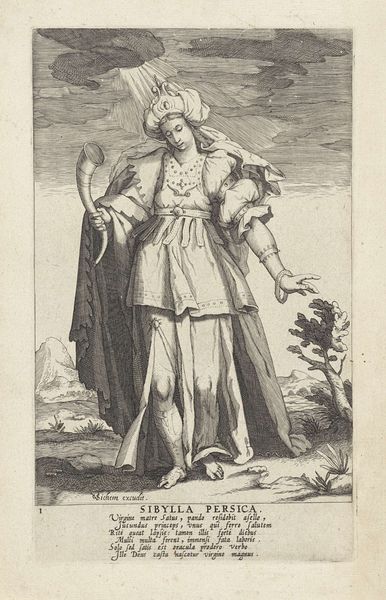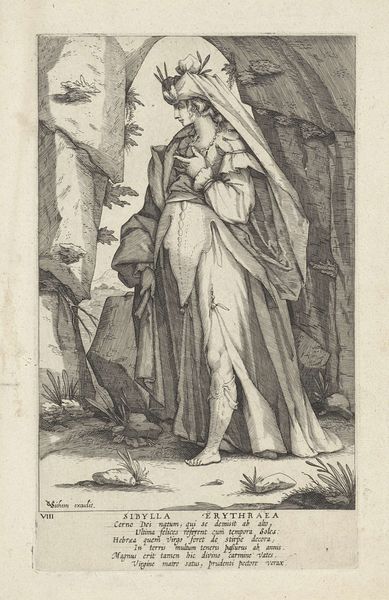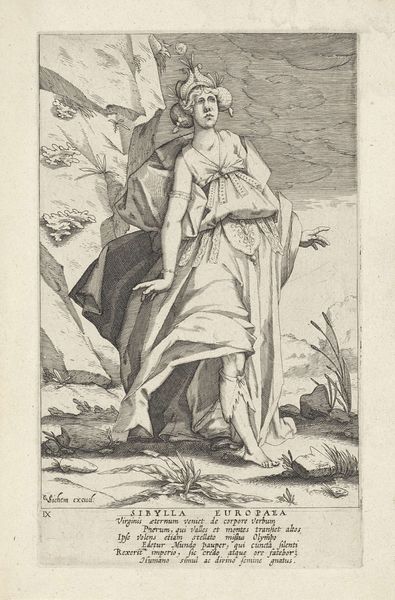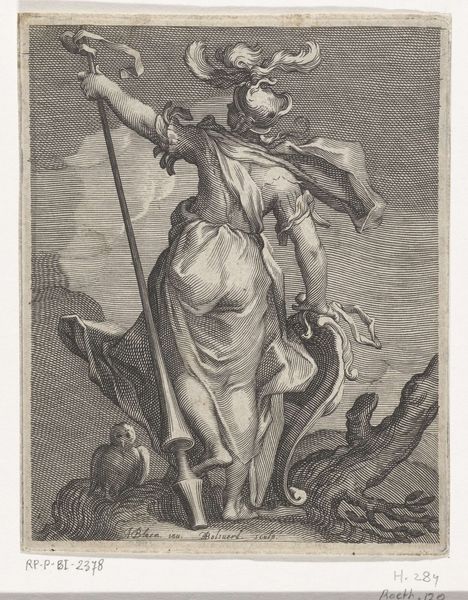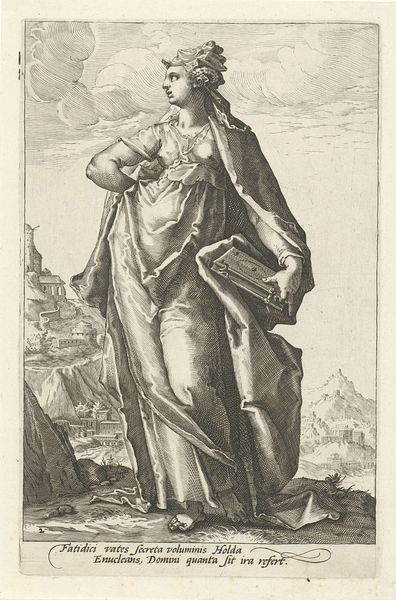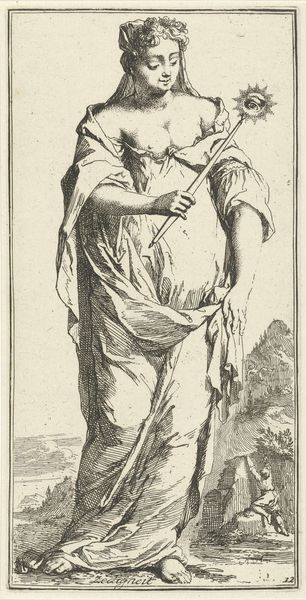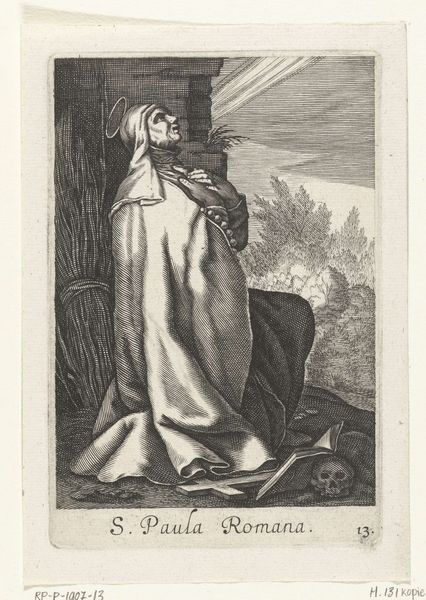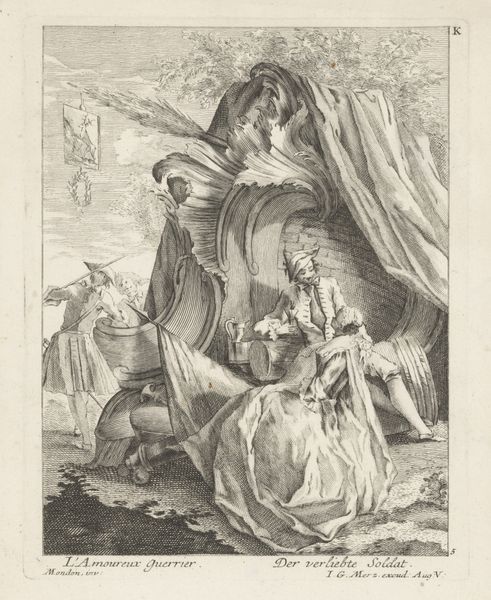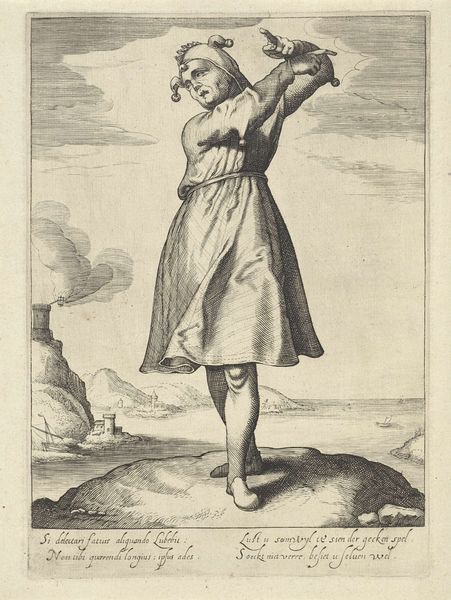
print, etching, engraving
#
portrait
#
baroque
# print
#
etching
#
figuration
#
history-painting
#
engraving
Dimensions: height 230 mm, width 139 mm
Copyright: Rijks Museum: Open Domain
Curator: Let’s look at this etching, "Egyptische Sibille," by Christoffel van Sichem I, created before 1608. What strikes you about it? Editor: It’s quite striking how the figure is placed against this rough, almost wild landscape. She holds what seems to be a book in one hand and a scroll in the other and looks… prophetic? How should we interpret this work? Curator: Absolutely. The Sibyls were prophetic women in classical antiquity. What does it mean to depict an "Egyptian Sibyl" during the Baroque era in the Netherlands? We need to unpack that. Consider the power dynamics at play. Who gets to define wisdom, and whose voices are centered in the construction of history and knowledge? The Baroque style, with its grandeur, could serve to ennoble her, but might it also exoticize and other her at the same time? Editor: So, it’s not just about depicting a figure from the past, but also about how her identity—as Egyptian—is being framed by a European artist of that time. Curator: Precisely. The print participates in the construction of identity, placing the ‘Egyptian’ in relation to a dominant European perspective. Think about it—how does this image reinforce or challenge stereotypes and perceptions of non-European cultures? How does the act of portraying a Sibyl contribute to legitimizing a lineage of knowledge, and who is included or excluded from that lineage? Editor: That makes me think about the gaze, whose perspective are we seeing this through? It definitely pushes you to consider it from a colonial and post-colonial viewpoint. I will look closer now with those points in mind. Curator: That’s exactly the point. By questioning whose voices we elevate and how we represent diverse identities, we engage more critically with the artwork. Always think about the intersections.
Comments
No comments
Be the first to comment and join the conversation on the ultimate creative platform.
